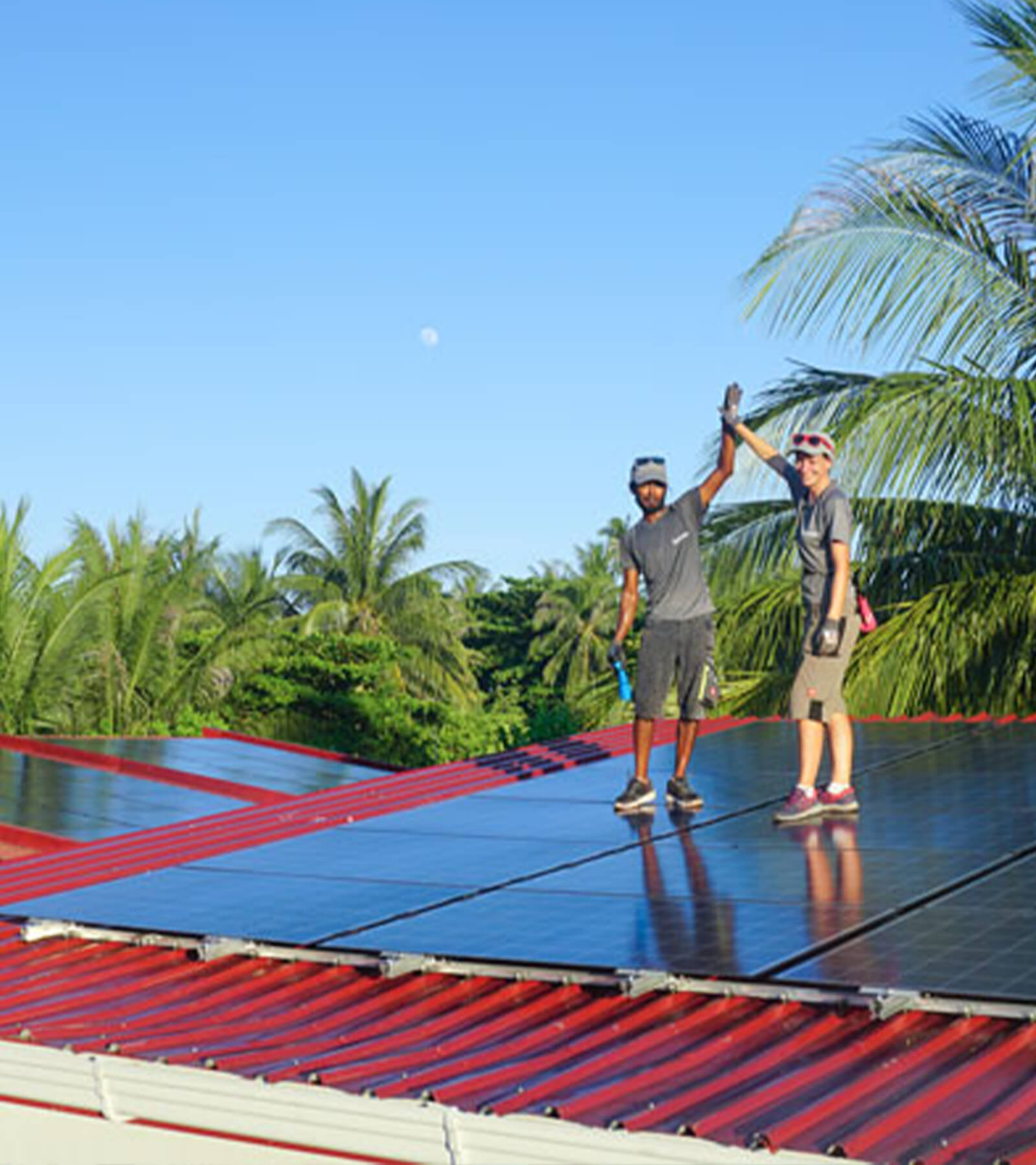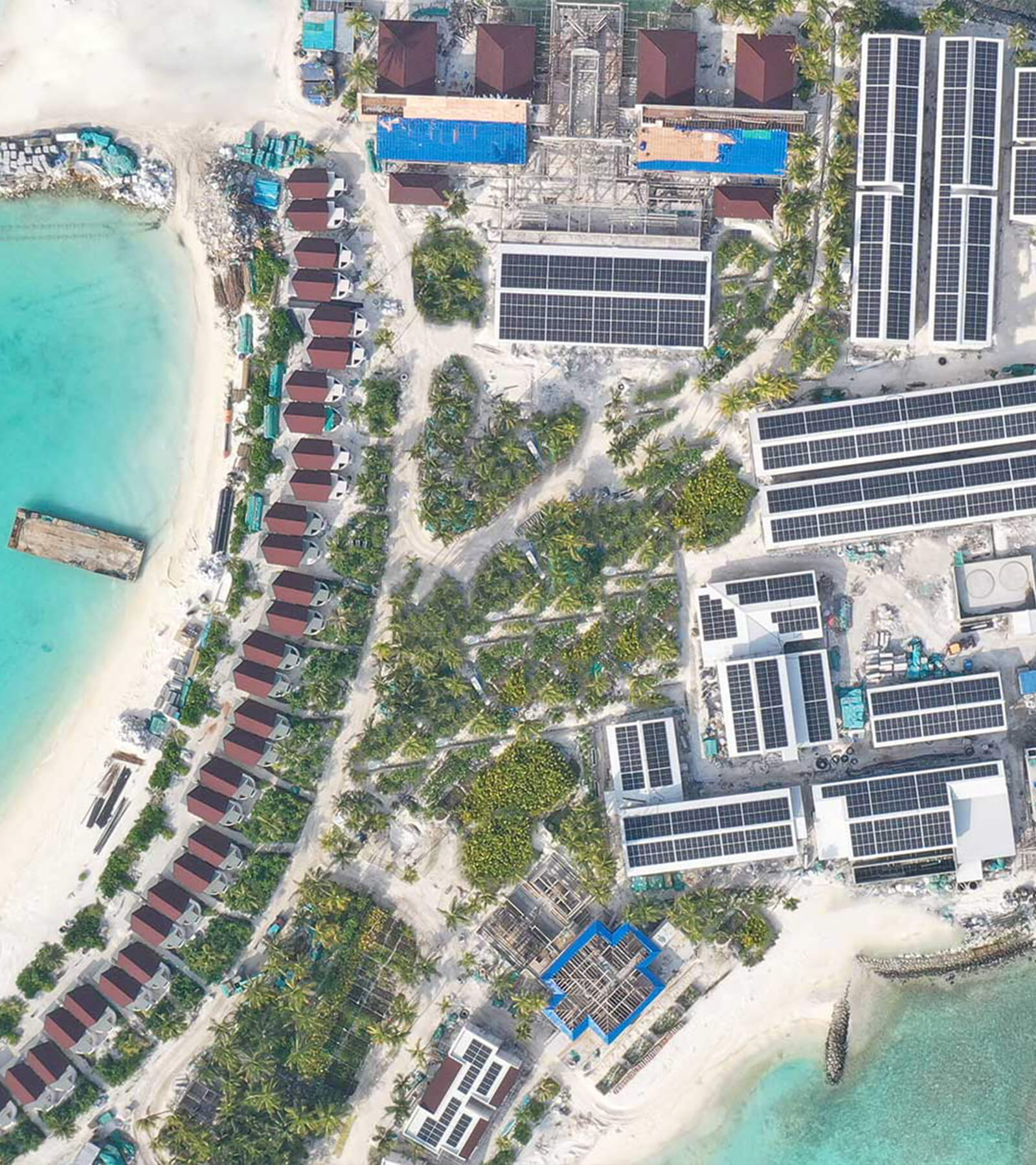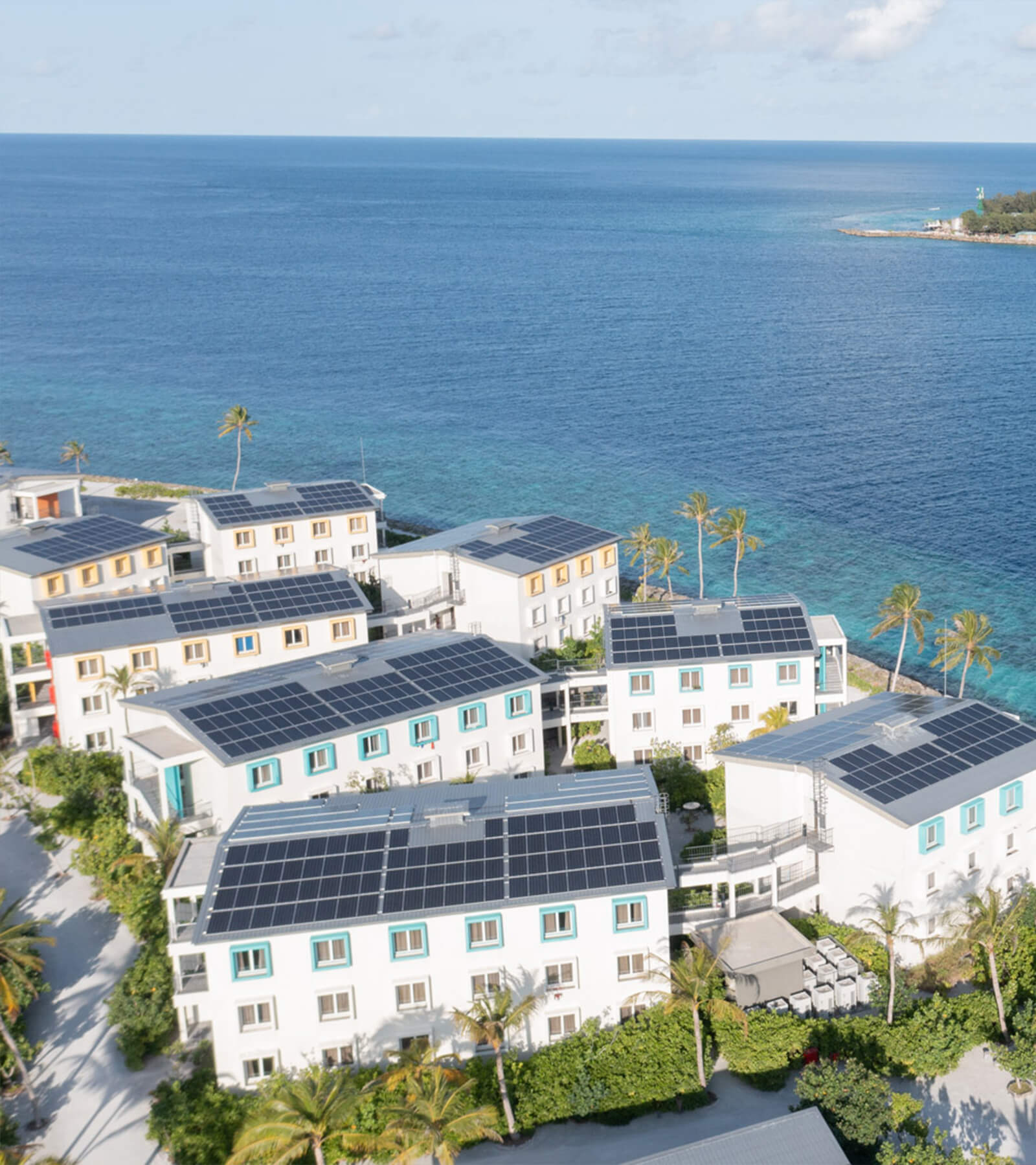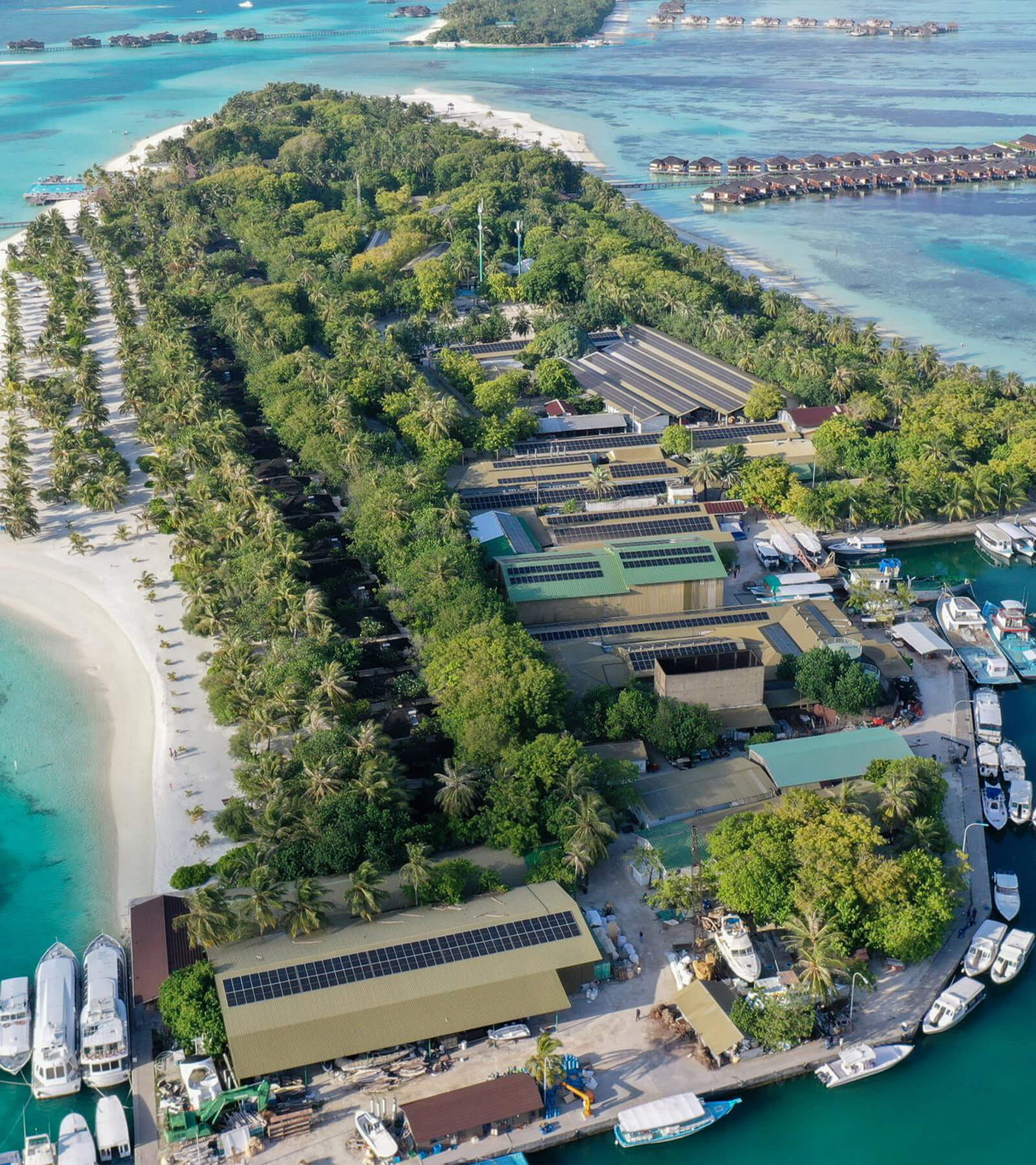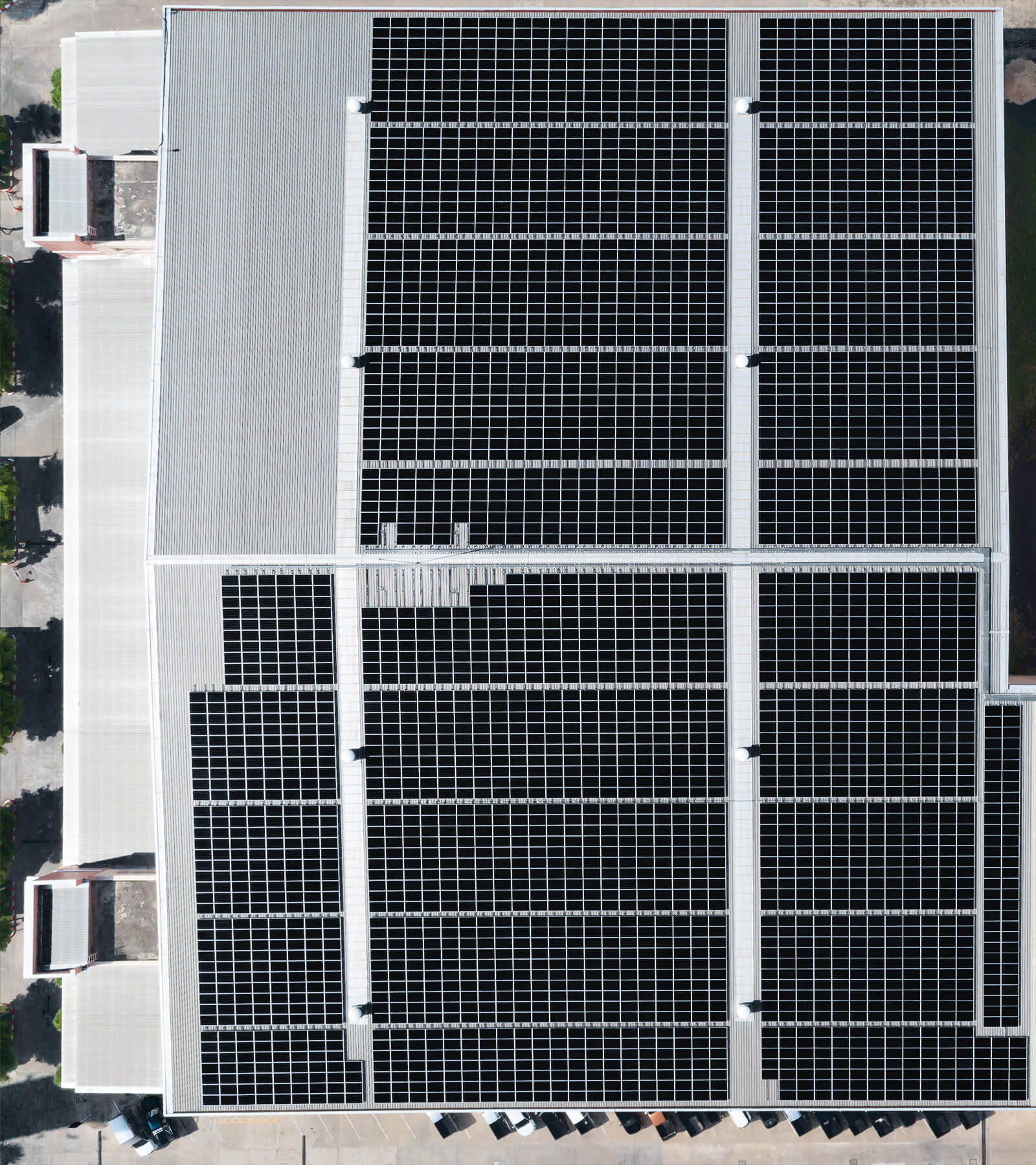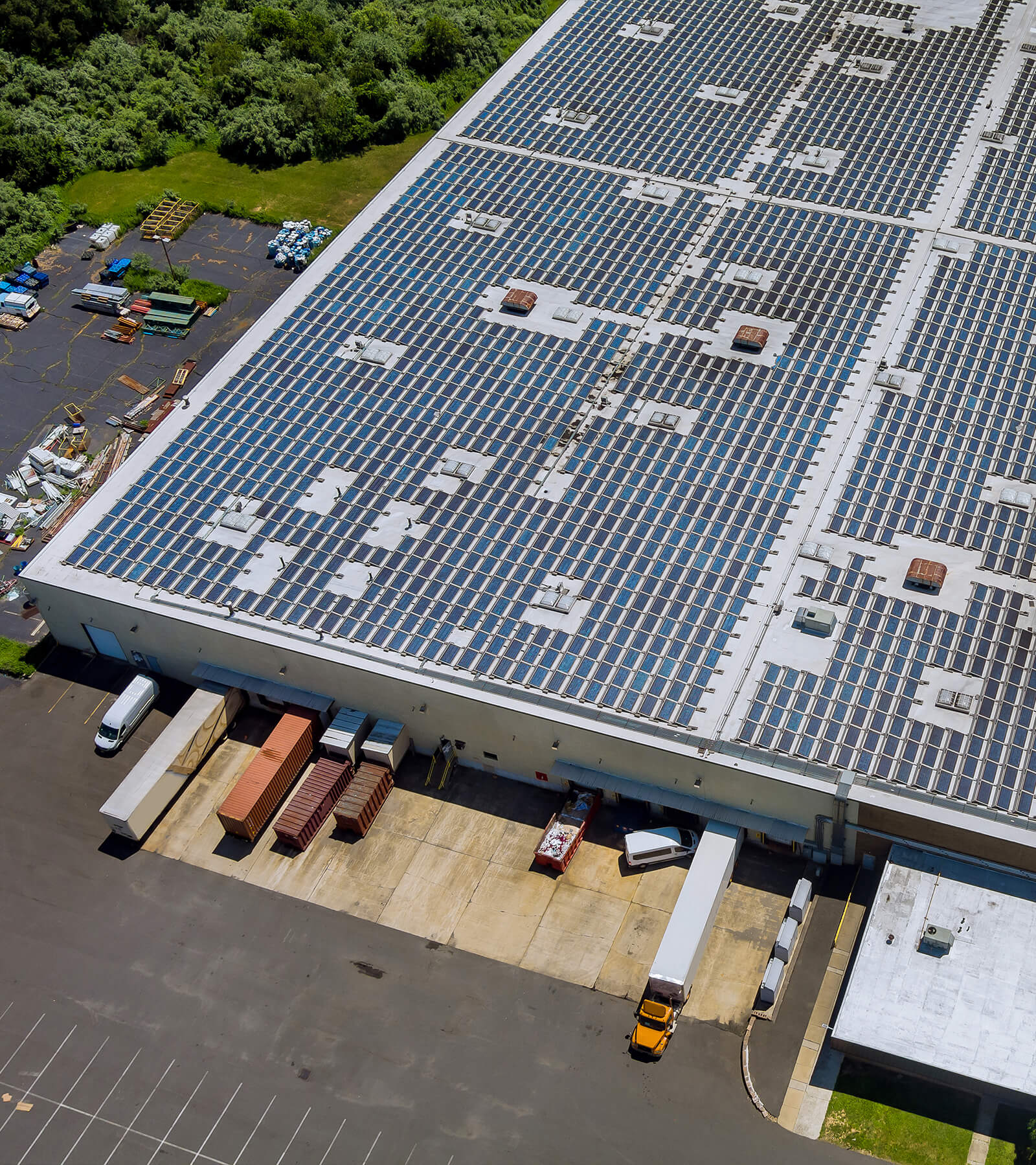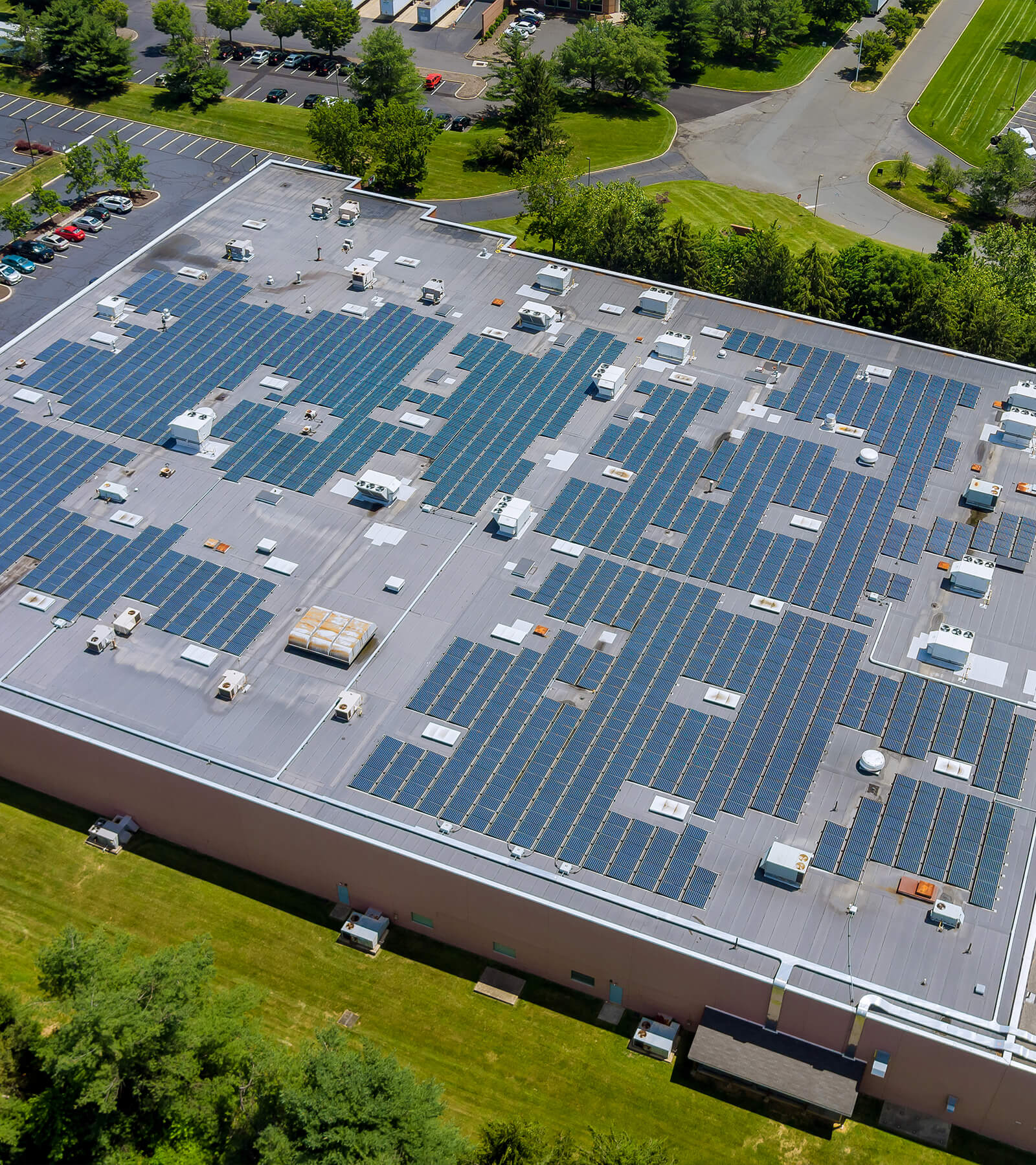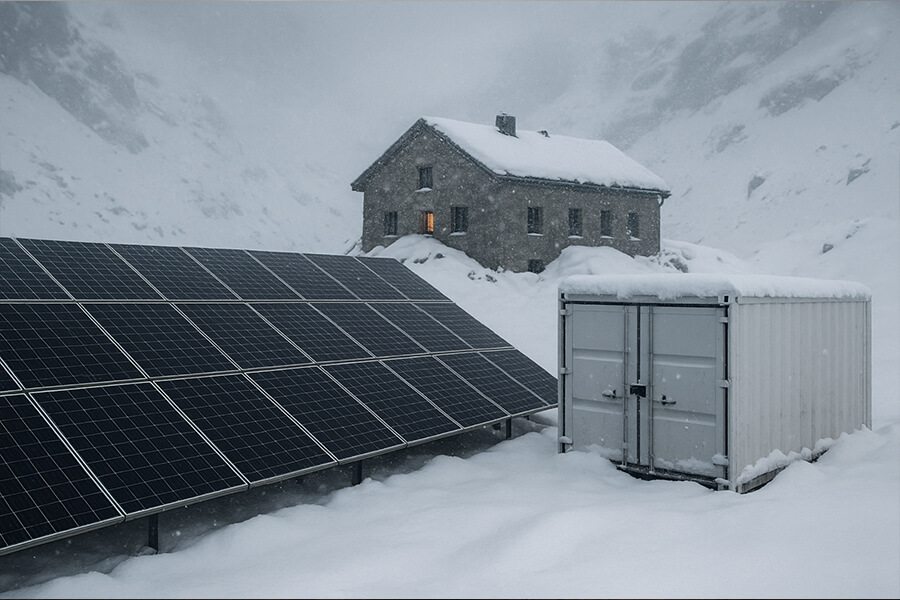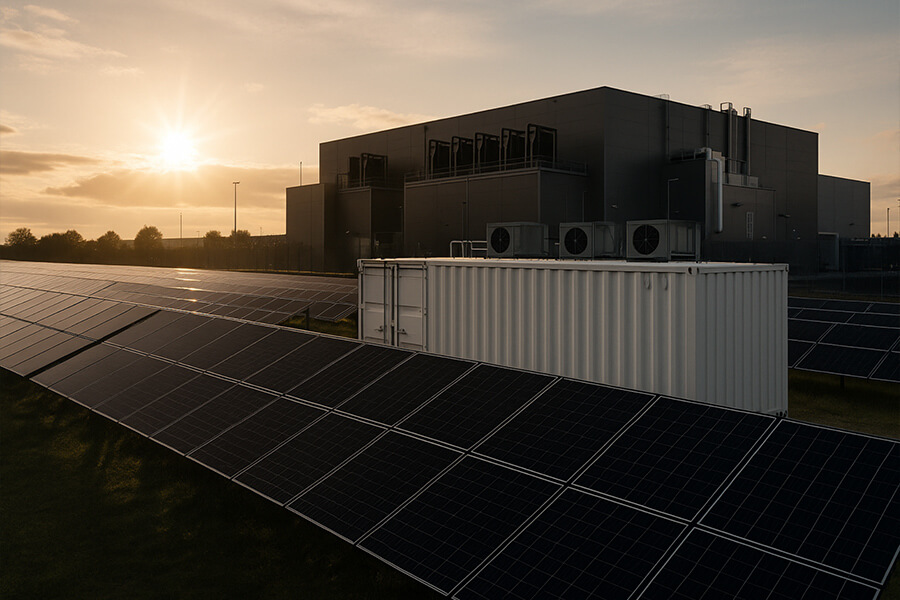Facing rising flood threats, the pragmatic town of Nieuwerkerk, Netherlands, decided their community center shouldn’t just be an evacuation point – it should power one. Their ingenious solution? Crowning the roof with solar panels and parking a rugged, IP68-rated Flood Safe BESS container (that’s a 1MWh Battery Energy Storage System, built like a waterproof wonder) beside it. This setup wasn’t just theoretical. During a tense near-miss flood event in 2024, the center transformed into the designated emergency hub. While the main grid faltered, the Flood Safe BESS container – leveraging its black start magic and critical load prioritization – seamlessly delivered over 72 hours of vital power for comms, medical gear, and warmth, proving that resilience can be built, one flood-proof battery box at a time.
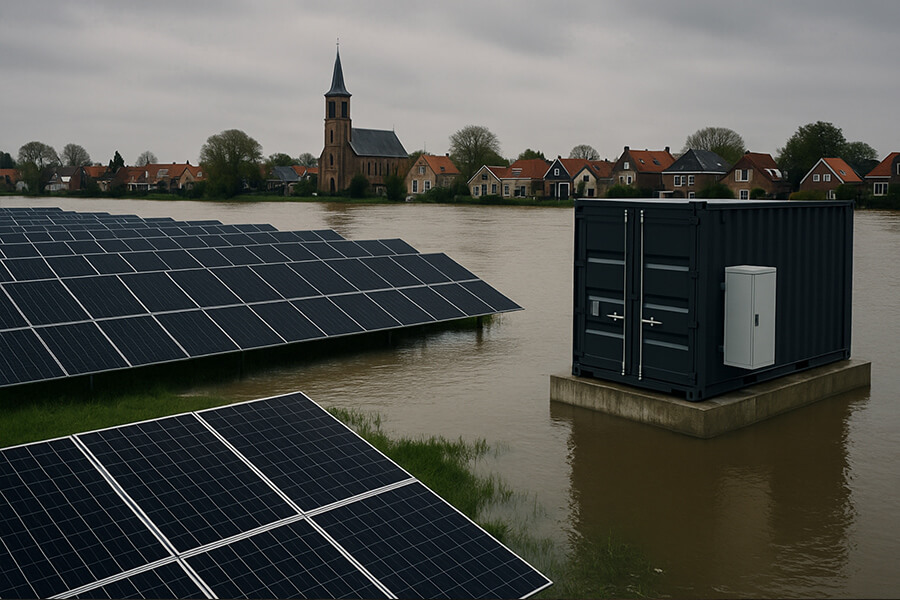
The Looming Puddle (With Dry Wit)
Picture Nieuwerkerk: a postcard-perfect Dutch town where the biggest threat isn’t windmills running amok, but the very water its ancestors mastered. For centuries, the Dutch treated floods like an overbearing aunt—annoying but manageable. Then climate change cranked the “wet” dial to “deluge.” By 2023, the Netherlands saw 14x more high-flood-risk days than in the 1960s. Waiting for a biblical Noah moment? As one local dryly noted, “We’d rather not test our wooden-shoe flotation skills.”
Table 1: Netherlands’ Escalating Water Woes (2020-2025)
| Metric | 2020 Baseline | 2025 Projection | Source |
|---|---|---|---|
| High-flood-risk days/year | 12 days | 48 days | KNMI Climate Dashboard |
| Avg. flood damage costs | €380 million/year | €1.2 billion/year | PBL Netherlands |
| At-risk population (low-lying) | 4.7 million people | 5.1 million people | Delta Programme 2025 |
Nieuwerkerk’s calculus was simple:
- 59% of its land sits below sea level (EU Copernicus)
- Evacuation centers without power = glorified “floating panic rooms”
- Solar panels on municipal roofs? “Free sun juice, if those Dutch clouds cooperate.”
So in 2024, they eyed their community center—a sturdy brick sentinel—and declared: “Let’s turn this place into a high-tech life raft.” No ark-building, no animal pairs. Just pure Dutch pragmatism with a twist of 21st-century genius.
Enter the hero of our soggy tale: the FloodSafe-BESS container.
The Ingenious Setup: Solar Crown & Waterproof Battery Box
Faced with rising waters, Nieuwerkerk didn’t just build higher dikes (though, being Holland, they likely topped them off between coffee breaks). They eyeballed their brick-built community center and saw untapped potential. Onto the roof went a 420 kW solar array – because even during a flood, Dutch clouds occasionally part, and free sun juice beats diesel generators. But the real stroke of genius? Parked firmly beside it like a stoic metal guardian: a 1 MWh FloodSafe-BESS container, turning the site into a self-reliant microgrid fortress.
Anatomy of the FloodSafe-BESS: More Than a “Big Battery”
-
Elevated Design:
Perched 1.5 meters above ground on reinforced pilings – not just “sitting pretty,” but positioned like a wary heron eyeing the tide. Why? Floodwaters in Nieuwerkerk averaged 0.8m during the 2024 surge (Rijkswaterstaat Data). -
IP68 Armor:
This isn’t “splash-proof.” This is “submerged for 72 hours in 3m of silt-heavy water and dustier than a Saharan sandstorm” proof. Certified to withstand:- Water ingress: 30+ meters depth for 168 hours (exceeding IEC 60529 IPX8)
- Dust resistance: 99.9% particulate exclusion (IP6X)
Think of it as a battery in its own personal, welder-sealed diving bell.
-
Solar Synergy:
The rooftop array feeds the FloodSafe-BESS, creating an islandable microgrid. During floods, this duo operates independently from the “fickle” national grid – critical when 37% of Dutch substations are flood-vulnerable (TenneT Resilience Report).
Table 2: System Specs vs. Flood Threats
| Component | Specification | Why It Matters for Floods | Source |
|---|---|---|---|
| FloodSafe-BESS | 1 MWh capacity, IP68 rated | Survives submersion; powers critical loads 72+ hrs | IEC 60529 Standard |
| Solar Array | 420 kW, 780 MWh/year output | Recharges BESS even under diffuse Dutch light | TNO Solar Potential Map |
| Microgrid Controller | ENTSO-E compliant, <2ms switch time | Seamless transition to “island mode” during grid failure | ENTSO-E Grid Code |
The Cost of Resilience (Spoiler: Cheaper Than Ruin)
While traditional flood walls cost €6.5M/km (Deltares 2024), Nieuwerkerk’s hybrid solution totaled €1.8M – with the FloodSafe-BESS container accounting for €1.2M. As the town’s energy lead quipped: “Why drown in debt fixing dikes alone when you can float on solar and batteries?”
The Test: When the Waters Rose (Almost)
Fast forward to late 2024. Dutch weather forecasts shifted from “typical drizzle” to “code orange deluge.” The Rhine and Meuse swelled, pushing levels in Nieuwerkerk to 0.85m below critical dike height (Rijkswaterstaat Alert). Plan B activated: the community center transformed into the official Municipal Emergency Hub. The national grid? Flickering nervously under transformer strain. The FloodSafe-BESS container? Cool as a cucumber in a Dutch fridge.
Black Start: Power from Zero, Like Magic
When the grid finally whimpered and went dark at 14:37 local time, the FloodSafe-BESS didn’t wait for instructions. Leveraging its EN 50549-compliant black start capability, it autonomously rebooted the hub’s microgrid in under 500 milliseconds. No diesel generator rumble, no frantic cranking. “It just… started,” recounted the hub manager. “Like giving the local power infrastructure a double espresso and a brisk pat on the back.” This instant restart is critical – 73% of grid failures during floods exceed 4 hours (ENTSO-E Incident Analysis).
Prioritized Power: No Watts Wasted
The system didn’t faff about powering decorative fountains or espresso machines (much to the chagrin of caffeine-deprived responders). Its AI load-shedding controller instantly channeled every kilowatt to life-or-death circuits:
- Communications: Keeping emergency radios, satellite links, and 5G repeaters online for rescue coordination (and public reassurance broadcasts).
- Medical: Powering ventilators, defibrillators, and vaccine refrigerators.
- Core Environmental Control: Maintaining heat at 18°C – “because Dutch flood refugees deserve warm toes, not hypothermia.”
Table 3: Emergency Hub Power Allocation During 2024 Flood Event
| Critical Load | Power Allocated | % of BESS Output | Duration Supported | Source |
|---|---|---|---|---|
| Comms & IT Systems | 35 kW | 30% | 78 hours continuous | Dutch Safety Board Protocol |
| Medical Devices | 25 kW | 22% | 78 hours continuous | NEN 1010 Medical Standards |
| Heating & Ventilation | 40 kW | 35% | 72 hours (cycling) | CEN/TC 169 Climate Standards |
| Lighting & Security | 14 kW | 13% | 78 hours continuous | Hub Operations Log |
Extended Autonomy: The 78-Hour Lifeline
For over three critical days, while external chaos reigned, the hub hummed with essential power. The FloodSafe-BESS’s initial 1 MWh capacity provided 72 hours of baseline support. But here’s the kicker: diffuse daylight through thick clouds allowed the rooftop solar array to contribute 180 kWh, stretching total runtime to 78 hours. The grid remained down for 86 hours (TenneT Outage Report), but Nieuwerkerk’s resilience never wavered. “We didn’t just endure,” the mayor stated, “we operated at 100% – coordinating rescues, housing 120 people, and proving climate tech isn’t just a fair-weather friend.”
The Payoff: From Risk to Resilience Hub
Nieuwerkerk’s community center didn’t just survive the 2024 near-miss flood – it transformed. What was once a potential casualty became the beating heart of municipal resilience, powered by the FloodSafe-BESS + solar duo. This wasn’t merely about electrons; it was about certainty. For 78 hours, it provided a dry(ish), 18°C-warm fortress where:
- Emergency teams coordinated 12 rescue operations for stranded residents (Safety Region Z-H Report)
- 120 evacuees slept safely with medical support
- Daily “panic-to-purpose” briefings kept morale afloat (“No one cried over missing stroopwafels… much,” joked a volunteer)
The Hard ROI: More Than Dry Feet
The €1.8M investment generated quantifiable returns far beyond crisis survival:
Table 4: Resilience Dividend (2024-2025)
| Benefit Category | Value Achieved | Traditional Cost Equivalent | Source |
|---|---|---|---|
| Disaster Damage Avoided | €4.1M (property + infra losses) | €6.2M for dike reinforcement | Deltares Flood Economics |
| Emergency Response Efficiency | 42% faster resource deployment | €780K in saved labor/ops | Dutch Safety Board |
| Public Health/Confidence | 0 flood-related injuries; 94% resident trust in hub | €310K in avoided trauma care | RIVM Public Health Study |
| Energy Revenue (Non-Crisis) | €28,500/year (grid services + solar sales) | – | TenneT Ancillary Market |
The Blueprint: Scaling the “Dutch Dike 2.0”
Nieuwerkerk proved that resilience isn’t about building walls alone – it’s about smart, layered defense. Their model is now replicating across flood zones:
- 6 Dutch municipalities have commissioned identical hubs since 2024 (Delta Programme Adoption)
- EU’s Cohesion Fund now subsidizes 40% of FloodSafe-BESS deployments in high-risk areas (EU Climate Adaptation Policy)
- ROI Payback: Achieved in <4 years vs. 15+ years for dike-only projects
As the mayor declared: “We turned our Achilles’ heel into a power plant. That’s not luck – it’s Dutch design meeting climate grit.” Flood-prone communities worldwide now have a template: Be prepared. Be smart. Be powered.
Introducing Maxbo Solar: The Power Behind the Power
Seeing communities like Nieuwerkerk proactively tackle climate threats with solar-plus-storage solutions is precisely why we innovate at Maxbo Solar. While we didn’t install the specific FloodSafe-BESS unit in this case (hats off to the brilliant team that did!), designing robust, integrated energy resilience systems is our core mission. We know energy security isn’t just about daily savings – it’s about critical lifelines when floods, storms, or grid instability strike.
Why Solar-Plus-Storage? The Resilience Imperative
The numbers speak louder than marketing hype:
- 42% increase in European extreme weather events since 2020 (EEA 2025 Report)
- €18.6B/year in EU economic losses from grid disruptions (ENTSO-E Cost of Interruptions)
- 94% survival rate for critical infrastructure with backup power during disasters (IEA Resilience Standard)
Table 5: Maxbo Solar System Performance Benchmarks
| System Component | Standard Industry Performance | Maxbo Solar Enhanced Performance | Impact | Source |
|---|---|---|---|---|
| Backup Duration | 8-12 hours (avg.) | 24-72 hours (scalable) | 3x longer critical operations | VDE Application Guide 4135 |
| Grid Independence | 40-60% self-consumption | 70-90% self-consumption | Slash grid reliance by 35% | Fraunhofer ISE Energy Charts |
| ROI Timeframe | 7-10 years | 5-7 years (with EU subsidies) | Faster capital recovery | EU Clean Energy ROI Study |
Our Engineering Philosophy: Resilience by Design
We specialize in integrated solar-plus-storage systems engineered for:
- Maximum Self-Consption: AI-driven energy management squeezes 30% more value from every kWh (proven vs. standard inverters).
- Seamless Backup Transition: <10ms switchover during outages – no flickering lights or reboot delays (certified to IEC 63052).
- All-Weather Durability: IP65-rated components withstand -30°C to 50°C, salt fog, and 28m/s winds (DNV Component Stress Testing).
Think of us as your partners in building energy resilience – rain or shine (though we’ll always cheer louder for sunshine!).
Ready to future-proof your community, business, or home?
➔ Explore our resilience solutions: www.maxbo-solar.com/resilience-hub
➔ Calculate your savings: www.maxbo-solar.com/roi-calculator
➔ Schedule a consultation: [email protected]
Let’s turn energy challenges into opportunities for security and savings.

